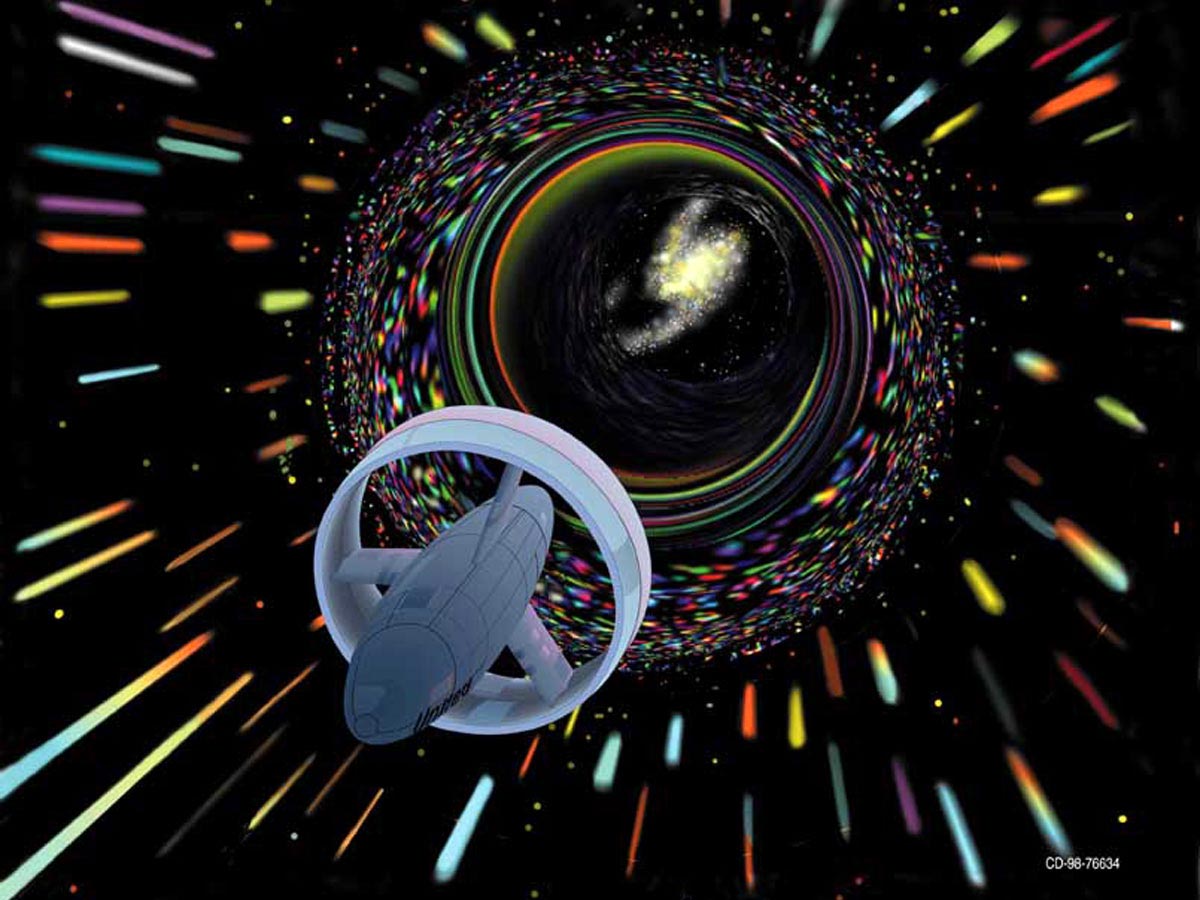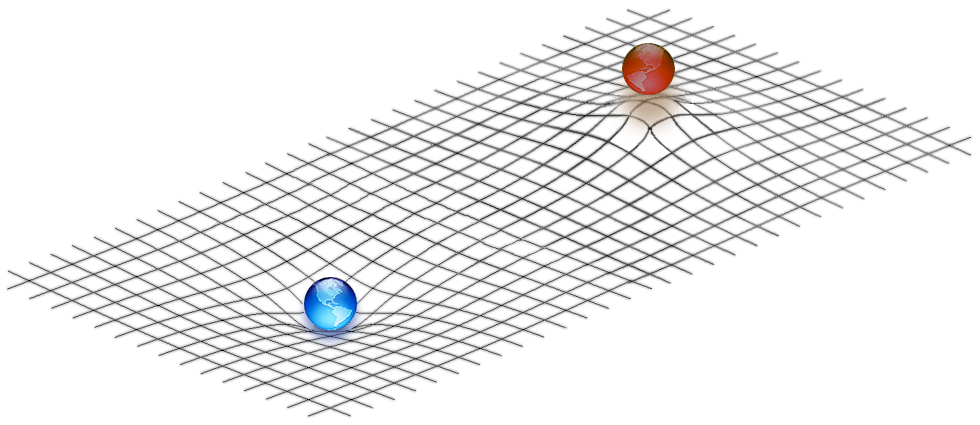
Posted on 05/18/2021 12:11:52 PM PDT by Red Badger

Faster than light travel is the only way humans could ever get to other stars in a reasonable amount of time. Credit: NASA
The closest star to Earth is Proxima Centauri. It is about 4.25 light-years away, or about 25 trillion miles (40 trillion km). The fastest ever spacecraft, the now-in-space Parker Solar Probe will reach a top speed of 450,000 mph. It would take just 20 seconds to go from Los Angeles to New York City at that speed, but it would take the solar probe about 6,633 years to reach Earth’s nearest neighboring solar system.
If humanity ever wants to travel easily between stars, people will need to go faster than light. But so far, faster-than-light travel is possible only in science fiction.
In Issac Asimov’s Foundation series, humanity can travel from planet to planet, star to star or across the universe using jump drives. As a kid, I read as many of those stories as I could get my hands on. I am now a theoretical physicist and study nanotechnology, but I am still fascinated by the ways humanity could one day travel in space.
Some characters – like the astronauts in the movies “Interstellar” and “Thor” – use wormholes to travel between solar systems in seconds. Another approach – familiar to “Star Trek” fans – is warp drive technology. Warp drives are theoretically possible if still far-fetched technology. Two recent papers made headlines in March when researchers claimed to have overcome one of the many challenges that stand between the theory of warp drives and reality.
But how do these theoretical warp drives really work? And will humans be making the jump to warp speed anytime soon?

This 2-dimensional representation shows the flat, unwarped bubble of spacetime in the center where a warp drive would sit surrounded by compressed spacetime to the right (downward curve) and expanded spacetime to the left (upward curve). Credit: AllenMcC/Wikimedia Commons
Compression and expansion Physicists’ current understanding of spacetime comes from Albert Einstein’s theory of General Relativity. General Relativity states that space and time are fused and that nothing can travel faster than the speed of light. General relativity also describes how mass and energy warp spacetime – hefty objects like stars and black holes curve spacetime around them. This curvature is what you feel as gravity and why many spacefaring heroes worry about “getting stuck in” or “falling into” a gravity well. Early science fiction writers John Campbell and Asimov saw this warping as a way to skirt the speed limit.
What if a starship could compress space in front of it while expanding spacetime behind it? “Star Trek” took this idea and named it the warp drive.
In 1994, Miguel Alcubierre, a Mexican theoretical physicist, showed that compressing spacetime in front of the spaceship while expanding it behind was mathematically possible within the laws of General Relativity. So, what does that mean? Imagine the distance between two points is 10 meters (33 feet). If you are standing at point A and can travel one meter per second, it would take 10 seconds to get to point B. However, let’s say you could somehow compress the space between you and point B so that the interval is now just one meter. Then, moving through spacetime at your maximum speed of one meter per second, you would be able to reach point B in about one second. In theory, this approach does not contradict the laws of relativity since you are not moving faster than light in the space around you. Alcubierre showed that the warp drive from “Star Trek” was in fact theoretically possible.
Proxima Centauri here we come, right? Unfortunately, Alcubierre’s method of compressing spacetime had one problem: it requires negative energy or negative mass.

This 2–dimensional representation shows how positive mass curves spacetime (left side, blue earth) and negative mass curves spacetime in an opposite direction (right side, red earth). Credit: Tokamac/Wikimedia Commons, CC BY-SA
A negative energy problem Alcubierre’s warp drive would work by creating a bubble of flat spacetime around the spaceship and curving spacetime around that bubble to reduce distances. The warp drive would require either negative mass – a theorized type of matter – or a ring of negative energy density to work. Physicists have never observed negative mass, so that leaves negative energy as the only option.
To create negative energy, a warp drive would use a huge amount of mass to create an imbalance between particles and antiparticles. For example, if an electron and an antielectron appear near the warp drive, one of the particles would get trapped by the mass and this results in an imbalance. This imbalance results in negative energy density. Alcubierre’s warp drive would use this negative energy to create the spacetime bubble.
But for a warp drive to generate enough negative energy, you would need a lot of matter. Alcubierre estimated that a warp drive with a 100-meter bubble would require the mass of the entire visible universe.
In 1999, physicist Chris Van Den Broeck showed that expanding the volume inside the bubble but keeping the surface area constant would reduce the energy requirements significantly, to just about the mass of the sun. A significant improvement, but still far beyond all practical possibilities.
A sci-fi future? Two recent papers – one by Alexey Bobrick and Gianni Martire and another by Erik Lentz – provide solutions that seem to bring warp drives closer to reality.
Bobrick and Martire realized that by modifying spacetime within the bubble in a certain way, they could remove the need to use negative energy. This solution, though, does not produce a warp drive that can go faster than light.
Independently, Lentz also proposed a solution that does not require negative energy. He used a different geometric approach to solve the equations of General Relativity, and by doing so, he found that a warp drive wouldn’t need to use negative energy. Lentz’s solution would allow the bubble to travel faster than the speed of light.
It is essential to point out that these exciting developments are mathematical models. As a physicist, I won’t fully trust models until we have experimental proof. Yet, the science of warp drives is coming into view. As a science fiction fan, I welcome all this innovative thinking. In the words of Captain Picard, things are only impossible until they are not.
Written by Mario Borunda, Associate Professor of Physics, Oklahoma State University.
Originally published on The Conversation.
Military first, then hand-me-downs to police later?
Flying cars. Get yours here: https://www.ehang.com/ehangaav/
Warp drives, well, the physics hasn’t gotten much past the point of hopeful misunderstandings.
I wonder what these guys talk about in the bar after bowling on Friday nights?
Relativity gives me a headache.
You can only measure velocity relative to some other object, not relative to empty space itself, and you cannot move faster than the speed of light relative to any other object. So if you launch two spacecraft, each going 90% of the speed of light relative to you but in opposite directions, how fast are they going relative to each other?
I know there is a mathematical formula to calculate it (which is far beyond my recollection of my 40 year old college calculus and physics classes), but conceptually it makes my head hurt.
There are lots of discussions about building spaceships which accelerate at just one G (or less), and approach light speed in a reasonable time. Problem seems how much fuel is required to maintain that acceleration that long; remember, it takes rockets a starting load of around a million pounds of fuel just to push a few G for a few minutes. After that first push, spacecraft just coast (taking clever advantage of orbital/gravity mechanics for further acceleration).
Military would have no use for them. Your problem with a flying car is it’s a worst of both worlds scenario. In car mode you’re going to have these inconvenient wings to deal with, so either your vehicle will have a huge footprint or you’ll have to fold them up like the worst rag top ever. Either way they’ll add weight and drag. As a plane because the car body isn’t aerodynamic in the right way your lift will be limited and its carrying capacity will be low. Then of course you gotta find room for all that gearing to have the engine either turning wheels relatively slowly or a propeller really fast. That will take up space and weight. Rich collectors of oddities would be about the only market for the crappy plane/car.
“Problem seems how much fuel is required to maintain that acceleration that long”
With our current understanding of physics the best way to get to the stars would be an array of solar powered lasers on the moon. They would be focused on light sails of a space craft. The craft could then steadily accelerate to a significant portion of light speed.
More importantly, why do you exist?
Yes, he most certainly did. I believe he stated it in one of his New York Times articles, which they like to lock up behind a paywall, but I’ll try to find a link to it for you when I get a chance.
You may be confused because of course he talks about “length contraction”, but there is a very good reason that although he called the correlating effect “time dilation”, he did not use the term “space contraction”, but rather “length contraction” instead. That was a very deliberate choice on Einstein’s part.
No problemo. All you have to do is steal it from neighboring universes. But you can't just take big bites out of people's universes without making a lot of enemies. So be prepared for that.
Bingo! This planet has spawned a bunch slugs compared to the intelligence needed to engage beings in other parts of the universe, should they exist.
-PJ
Eventually, you’ll need to slow down and stop.
Correct, that is the big unsolved problem. The good news is once you launch you will have several years to figure that part out.
------No he didn’t.
Well considering it was all at one time smaller than a BB wouldn't that be compressed and what it is now, be expanded? Where was space then since it wasn't needed?
There is a really cool freeware program out there called “Celestia” that allows you to travel around the universe with your computer. It is most excellent, though of late there seems to have been little development on the project. You really do not have any idea how freaking huge the universe is, until you start traveling around it, even going at hyperluminal speeds.
I did some experiments were I set it up to travel to one of the nearer stars at 1AU/sec. That is an insane speed, but it still took weeks.
Celestia is HIGHLY recommended for anyone with kids.
Light sails are interesting, but precision is presumed problematic.
“So if spacetime is just a combination of time and space, and the space itself cannot be warped, then that only leaves the time element. That is the thing that is actually being warped to produce the effect we see as gravity. Gravity is an effect of warped time, not warped space.”
This is absolutely false. The three dimensions of length are altered by gravity just as surely as the fourth dimension of time; in special and general relativity, the only difference between length and time is their opposite signs in the distance metric.
Couple this with all the UFO stuff leaking out and I’d bet a big reveal is on the way.
Disclaimer: Opinions posted on Free Republic are those of the individual posters and do not necessarily represent the opinion of Free Republic or its management. All materials posted herein are protected by copyright law and the exemption for fair use of copyrighted works.